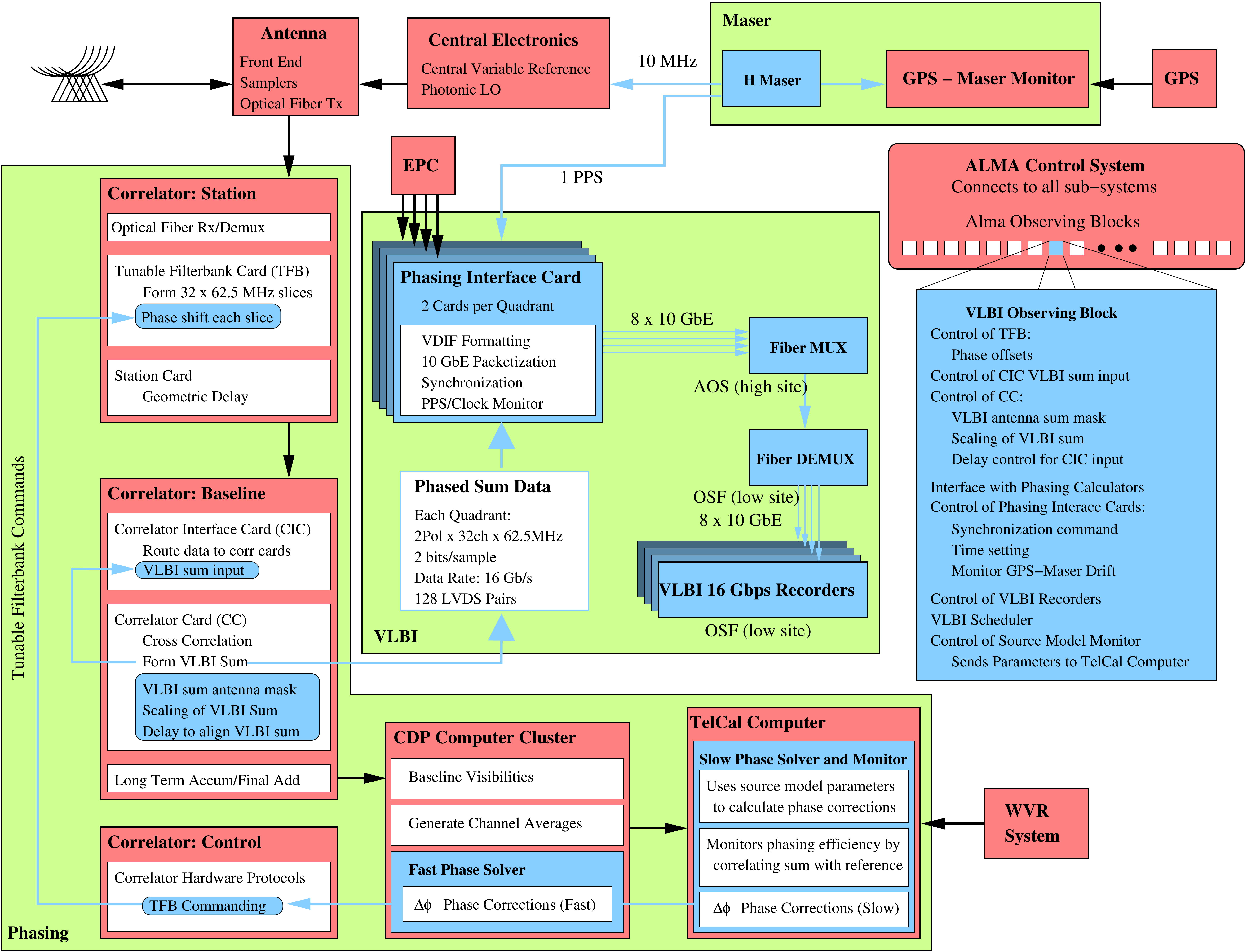Table of contents
- 1. Summary of the APP project
- 1.1. APP status
- 1.2. Overview
- 1.3. MPIfR tasks
- 1.3.1. Telcal Phase Solver
- 1.3.2. Polarization phase & delay calibration
- 1.3.3. Scheduler
- 1.3.4. Implementation and verification
This is the public page for our part of the "ALMA Phasing Project" (APP) at MPIfR.
If you are looking for the "official" APP management pages go here.
The APP project was presented By W. Alef at the "11th European VLBI Network Symposium & Users Meeting"
The presentation can be found here, the proceedings will soon become available here.
Summary of the APP project
By phasing all ALMA dishes together into a single effective aperture, ALMA can operate as both an exceptionally sensitive mm/sub-mm VLBI element and a beamformed array suitable for high frequency pulsar work. A detailed design for implementing a system to phase up the array has been completed and funding to build and integrate this capability into ALMA has been secured. With this system in place, ALMA will become a key element in Global mm/sub-mm VLBI arrays that target a broad range of high sensitivity and high angular resolution science.
The ALMA Phasing Project is being realised by an international consortium consisting of MIT Haystack, NRAO, MPIfR, NAOJ, ASIAA, and U. Conception. MPIfR manages the European part which is supported by OSO, ESO and others. The project duration is planned to be 4 years, with a total workload of more than 25 work years and a total budget of more than 4 $M. Expected completion of the phasing system is in 2015. The funding for the project comes from a combination of pooled resources from international funding agencies.
ALMA was de-scoped in the development phase, but hooks for phasing were built into the correlator to make it relatively easy to implement VLBI at a later date. The parts that have to be added are:
- a Hydrogen-Maser
- a phasing system and software
- VLBI formatting, data transport and recording
The software VLBI correlator DiFX which will be used for correlating the phased ALMA signal against the recorded signals from other telescopes participating in an observation has to be enhanced to cope with non-matching frequency sub-bands (62.5 MHz vs. 64 MHz) and to able reconstruct ALMA's linear polarisation to the standard circular polarisation which is standard in VLBI.
APP status
The APP has passed both the preliminary design review and the critical design review and is being implemented.
First tests are planned for early 2014, the project will end with the commissioning of the phasing system early 2015.
Overview
Hardware blockdiagram:
 ALMA phasing block diagram. The red boxes exist, the blue boxes have to be added for phasing ALMA, and the green colour groups boxes into larger units. (for details see attached paper)
ALMA phasing block diagram. The red boxes exist, the blue boxes have to be added for phasing ALMA, and the green colour groups boxes into larger units. (for details see attached paper)
Software blockdiagram:
Modifications needed for ALMA software. The red boxes exist, the blue boxes have to be added for phasing ALMA, and the green colour groups boxes into larger units. (for details see attached paper)
MPIfR tasks
MPIfR has a representative in the APP management team who takes care of managing the European contributions to APP which are software, VLBI data correlation, scientific contributions.
Telcal Phase Solver
The TelCal software will be enhanced to solve for antenna phases which will be used to correct the antenna signals of the incomming data, which can then be added coherently in the existing adder unit of the correlator.
Polarization phase & delay calibration
Under the lead of MPIfR personel ways to combine the linear polarisation of ALMA with the circular polarisation of other antennas was investigated. The best method identified - correction of the polarisation after the VLBI correlation with DiFX - will be implemented in a joint effort with OSO.
Scheduler
VLBI observations are driven via so-called VEX schedule files. A typical VEX schedule file has to be enhanced for additional ALMA related control information. In addition this enhaced VEX file has to be translated into an ALMA specific XML file. MPIfR woks on this together with MIT Haystack.
Implementation and verification
MPIfR will contribute the APEX telescope situated close to ALMA for first VLBI test observations.




Comments